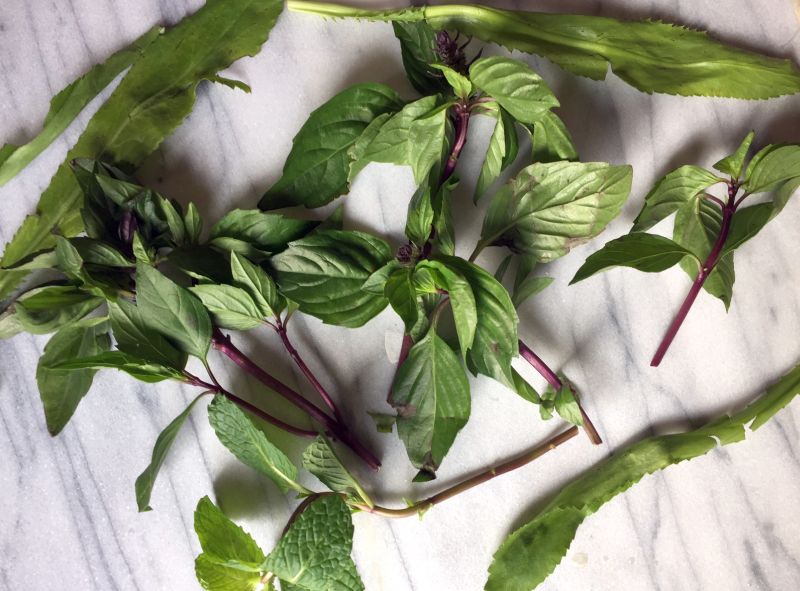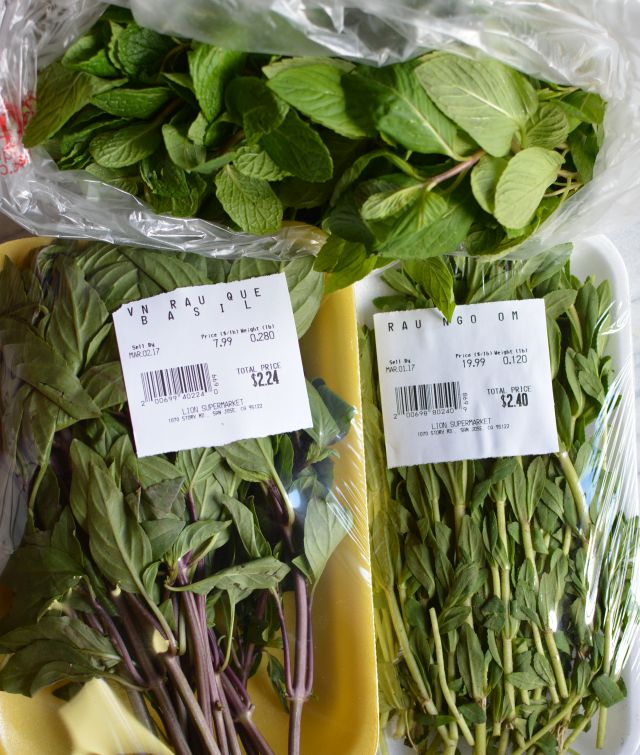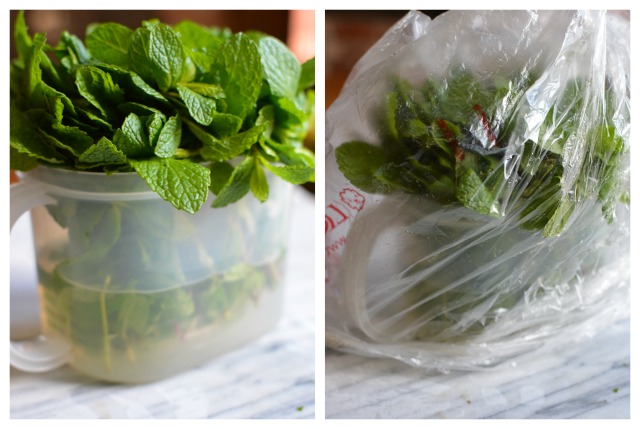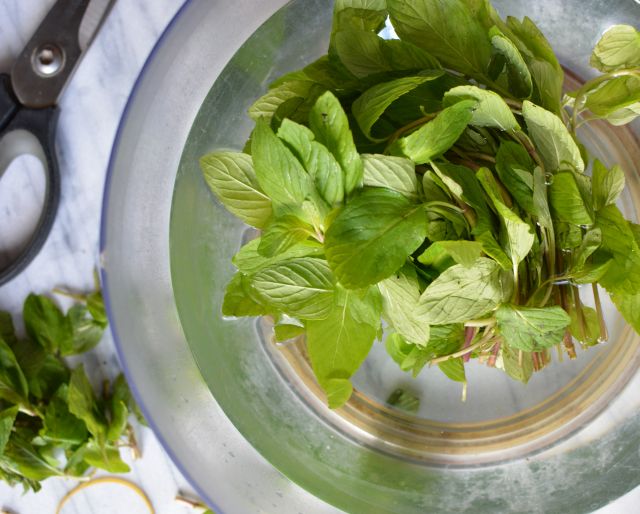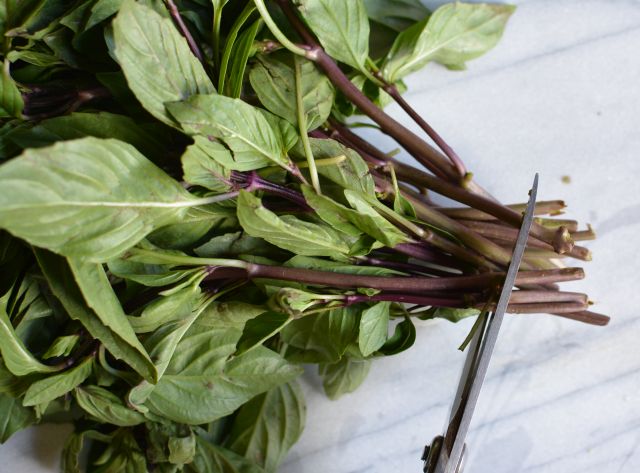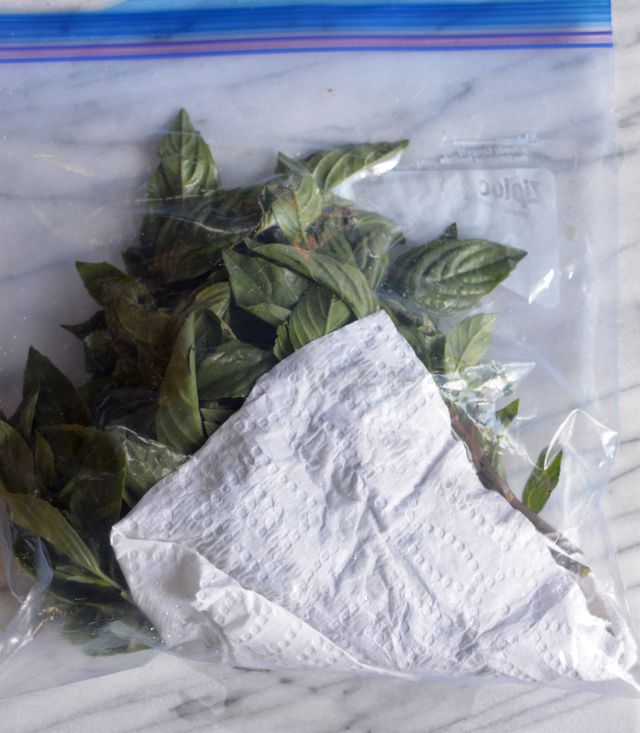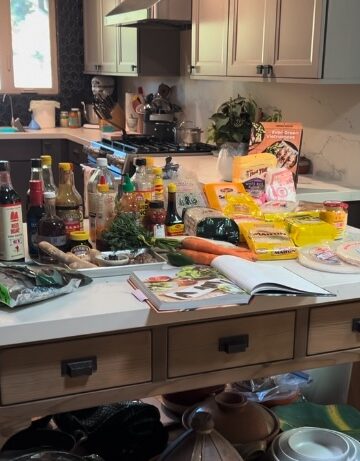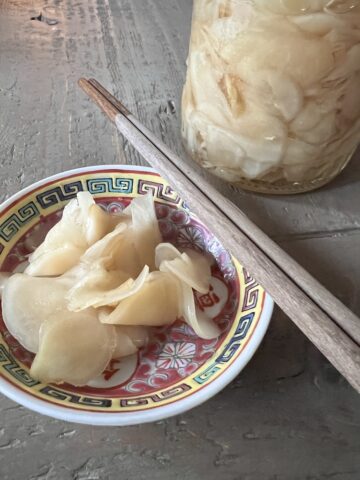Fragrant, fresh herbs are a cornerstone of the Vietnamese kitchen. They're not for garnishing but rather for enjoying practically like a vegetable to add punch flavor to foods. You can have a super fresh supply of herbs if you grow it but not all of us can do that. I grow some and buy others. Just harvested herbs from your garden are easy to keep fresh: put them in a vessel of water and keep on the counter.
The herbs you buy unfortunately cannot be treated that way. Kept in a produce bag, the herbs don’t last long. They soon lose their perkiness, which for dishes like pho, diminishes the experience. I’ve been experimenting with a different way to keep herbs fresh.
If you’ve read VWK and my books, you know that I’ve favored keeping certain herbs like cilantro, mint, tia to purple perilla, rau ram Vietnamese coriander, and kinh gioi Vietnamese balm in the fridge like flowers: Cut off a knuckle’s length of the bottom stem then put the herbs in a container with 1 to 2 inches of water then cover loosely with a plastic produce bag. (The VWK Vietnamese herb primer is here, in case you need a guide.)
That “florist” method works great for those particular herbs, keeping them fresh for a good week, if I change the water every 2 or 3 days. However, Thai basil, rice paddy herb, and culantro cannot be kept that way. They tend to poop out fast. At an Asian market, you’ll notice that those delicate herbs are often sold on Styrofoam trays wrapped in plastic, or in plastic bags; hardier herbs are sold bunched up and often spritzed by water. Excess moisture ruins Thai basil so keep them in their packaging, a Hmong farmer once told me. But if you keep them in their packaging for several days, they can lose moisture and wilt. Their herb verve is gone.
On top of sad herb situation, I’ve been keeping so many herbs in my fridge for pho garnish plates and other Viet dishes that I sometimes knocked over the water containers. No bueno. What a mess to clean up.
Moreover, I was tired of washing Thai basil fresh every time I wanted it for pho. Thai basil is not the only herb for pho but it’s one that many people enjoy. After you get your hands on some you want to keep it as fresh as possible.
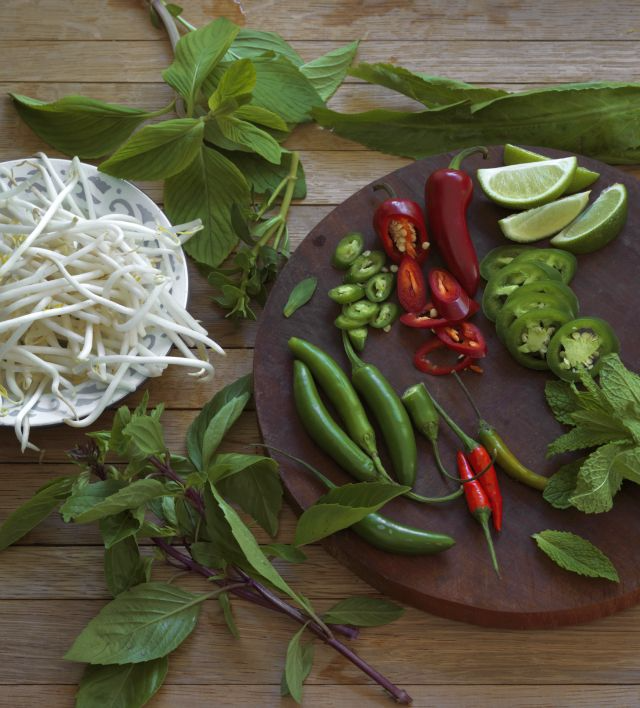
The solution was in my mom’s fridge. For years, she was washing herbs, spinning them in an OXO spinner that I gifted her, then keeping them in recycled plastic tubs originally used to keep baby lettuce fresh. I assumed that she only kept herbs that way for when we had big family gatherings, but she recently revealed to me that the approach works well to keep the herbs fresh for days. Duh!
I tried it with the stalwart herbs -- cilantro, mint (spearmint and spicy mint), tia to purple perilla, rau ram Vietnamese coriander, and kinh gioi Vietnamese balm, putting the herbs in gallon size, ziploc plastic bags with a piece of paper towel to absorb moisture. Bingo, it worked. I could put 2 or 3 kinds of herbs in a bag and it was fine.
The test was with the delicate herbs, primarily Thai basil because it darkens so easily. It’s typically sold on Styrofoam trays and very dry. I needed to slightly rehydrate it so as to return some freshness to its stems and leaves. What I tried was this:
Trim off ½ to 1 inch of the bottom of the stems. If there are ugly, nearly gone leaves, discard them. Let the healthy remaining sprigs soak in water for 5 to 10 minutes so the leaves absorb water. Drain and spin in a salad spinner 2 or 3 times (dumping out water between spins) to remove excess moisture. Place in a plastic zip-top bag with a paper towel loosely wrapped around the sprigs. Refrigerate. I keep my bags mostly in the vegetable bin but sometimes I’ve tucked them into the regular shelves.
The photo at the top of this article represents sprigs and leaves that had been kept for 6 days. Six days! Some of the basil leaves were not so pretty but in the main, they were unbruised and ready for action.The culantro suffered a bit but I’m not sure if it’s the leaves themselves (they are not at their prime now). I hope to try this method again in the warmer months when the herbs are at their peak. And with the rau om rice paddy herb, it’s an aquatic herb so trim, soak, wash and spin was good for reviving it.
Note that if for some reason the paper towel gets excessively wet, replace it.
What I like about this method is that the washed herbs last for days. They’re ready for pho or any other dishes whenever you’re ready to eat them! A major time and space saver, plus a win for the fresh Thai basil cause.
Maybe this would work for super delicate holy basil, tender lime/lemon basil, and large floppy Italian basil? We shall see!













